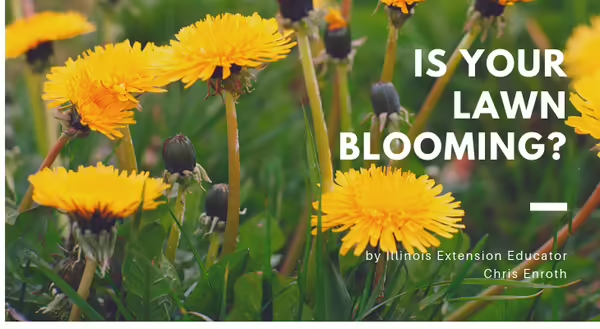
Is your lawn blooming? Mine is, and I couldn't be happier! You may be wondering if I am referring to the actual grass plants in my lawn. Nope! Currently, my lawn is a stunning display of colors. Mostly yellows and different hues of blue and purple. Yes, my lawn is full of what many people believe to be weeds – dandelions, clover, creeping Charlie, and violets. Crocus started the show this spring, emerging from the near dormant turf. The crocus was then followed by daffodils and tulips. What a stunning display it has been!
Lawns have replaced a significant portion of native landscapes that may have been home to wildflowers and the pollinators that depend on them. While much of that native landscape is gone, the pollinators have dwindled but still remain. Fortunately, there are some plants that have adapted to surviving in our lawns. Early spring blooms of dandelions, creeping Charlie, and violets are important food sources for pollinators.
Want to raise more butterflies? Violets are the larval (caterpillar) food source for the great spangled fritillary butterfly. In late summer, the adult female butterfly will lay her eggs near, not on, a patch of violets. The eggs will hatch and the young caterpillar will overwinter in wood mulch or leaf litter. If you allow violets to grow in your lawn or landscape and have leaf litter or wood mulch nearby, chances are you will be raising the next generation of Great Spangled Fritillaries next spring.
Is my entire lawn choked full of 'weeds'? No. The small lawn area that I look out on from my back window is pretty much a full stand of grass, minus the dog spots. From my oasis of turf, the yard slopes down to a wooded area. That slope is where the flowering lawn resides.
What do I spray to keep weeds out of my oasis of lawn grass? Nothing. I credit my weed-free lawn with:
- The area is very small (picture three parking spaces and that's about the size),
- Cutting the lawn as high as my mower will go (about 3-inches),
- Overseeding every year (anytime from August 15 to September 15),
- Fertilizing every year (best time is again August 15 to September 15),
- Mulching fall leaves back into the lawn (Sometimes I have to run over the leaves a few times)
As you have read the size of my lawn is smaller than most, but it is appropriate for the scale of our house and needs of my family. Plus, I needed more room for other plants like tomatoes!
If seeing bees nectar on dandelions or caterpillars munching on violets doesn't bring joy to your heart, maybe a flowering lawn isn't for you. Even still, consider growing a patch of wildflowers, or leave the lawn herbicide on the shelf and practice good lawn care that I listed above.
Want to learn more about good lawn care and what it takes to grow a lush lawn? Contact your local University of Illinois Extension office for more lawn care tips. Find an Illinois Extension office near you.
Good Growing Tip of the Week: Lawn care goes beyond fertilizer and irrigation, good soil management is also key. Topdressing with an inch of compost is a great way to add organic matter to your lawn soil.
Sign up for our emails! Want to get notified when new Good Growing posts are available? SIGN ME UP
MEET THE AUTHOR
Chris Enroth is a horticulture educator with University of Illinois Extension, serving Henderson, McDonough, Knox, and Warren counties since 2012. Chris provides horticulture programming with an emphasis on the home gardener, landscape maintenance personnel, and commercial landscapers. Additional responsibilities include coordinating local county Master Gardener and Master Naturalist volunteers - providing their training, continuing education, advanced training, seasonal events, and organizing community outreach programs for horticulture and conservation assistance/education. In his spare time, Chris enjoys the outdoors, lounging in the garden among the flowers (weeds to most).